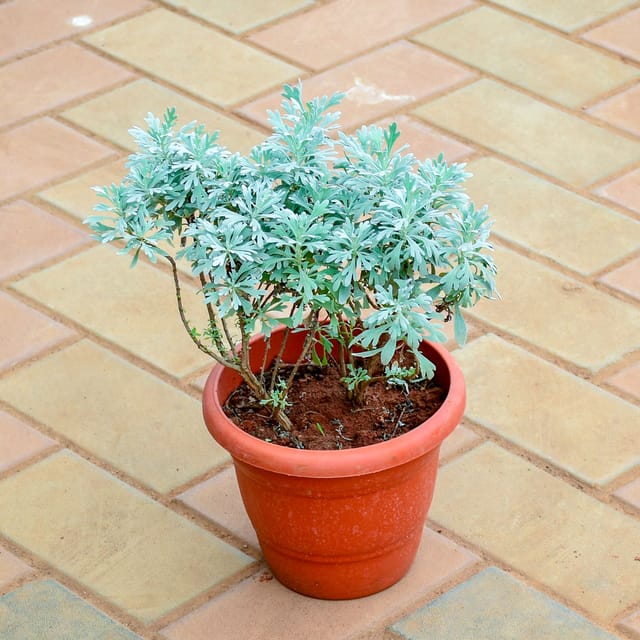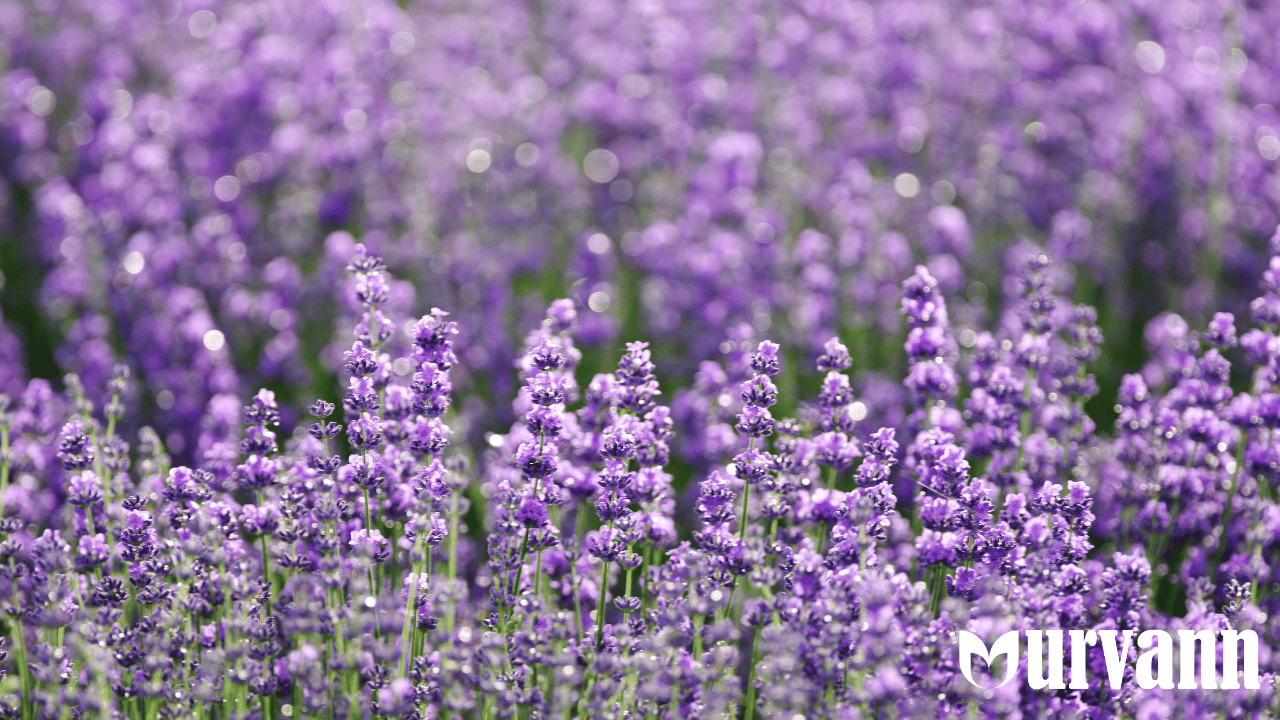Whenever we talk about herbal gardens or medicinal plants, there’s one name that always stands out: Lavender. This morning, as I opened a new bottle of shampoo and scanned the ingredients (part of my attempt at a more mindful self-care routine), there it was again—Lavender. That familiar name got me thinking and equipped my mind even when I sat down for my daily writing session and browsed for more plant-related topics, Can Lavender grow in India, circled around my mind a lot.
About Lavender
In the world of plants, lavender truly stands out as a gem. The plant features purple blossoms that sit at the top of almost bare, woody, tall, slender stems. In addition to this, the plant’s silvery-green leaves have a mystical beauty of their own. But above all, what has made lavender so well-known is its world-famous scent, one that calms the senses and gives rest to the mind.
If I had to talk about the benefits of the lavender plant, I know they’d be the same points you’ve probably seen all over the internet. But for me, the first time I came across lavender was when I saw one of my aunts spraying lavender oil around the corners of her pillow at night to help her sleep. That simple introduction made a young girl, who until then only considered roses her favourite flower, pause and wonder.
How to Grow Lavender at Home
Picture yourself wandering through a valley where endless purple fields sway softly in the breeze. Lavender flowers bloom proudly on tall, slender stems, their scent floating through the air, delivering a sweet, calming, and almost magical scent.
Now, you can also bring a charm home. Simply get a little pot of lavender for your windowsill, and become the plant parent you always wished to be, or start growing lavender from seeds.
- It all starts with preparing the ground or the seedling trays for the germination process. At the start of their journey, prepare a good potting mix, providing them with adequate moisture.
- Place them in an area of indirect sunlight, and be careful with them. Go with mild fertiliser, keep the soil moist, and care for this soil baby to get the first sight of greens.
How to plant lavender?
Now, once your seedlings have a few leaves, they’re ready to be placed in the right growing conditions. Transfer them to pots and adjust them to the growing conditions they’re about to meet.
Best Conditions for Growing Lavender
Like many plants, certain lavender growing conditions must be met to have it at home. It is not a hard-to-grow plant; once these conditions are fulfilled.
-
Sunlight
Like many flowering plants, lavender is also a sun lover. It grows well in an area of bright sunlight for about six hours of the day. However, when the plant is in the transplantation stage, you can keep it in a semi-shaded area.
-
Watering
Lavender can live in dry and warm conditions. It has an image as a drought-tolerant plant. However, the best way to water the plant would be to let it dry out between watering sessions. Check the soil first, and if the soil appears dry, then proceed with it.
-
Soil
Lavender can do well in less fertile soil, but it should be sandy to facilitate proper aeration. It prefers alkaline soil, so a pH value of 7 is best for it.
-
Fertilisation
Lavender can thrive on mild fertilisation. You can use cow dung or any slow-release NPK fertilizer for the same.
-
Pruning
Pruning your lavender won’t harm it—in fact, it helps! Trim off any dry or dead leaves to encourage new, healthy growth and keep the plant in shape.
-
Pests
Lavender itself is used for various remedies, like mosquito repellent and other insects, with its pungent smell. To keep it safer from any attacks from garden pests, you can spray a neem solution on the plant.
-
Placement
Lavender can be grown on a sunny windowsill or balcony. As long as it gets full sunlight, it will be happy. It’s not an invasive plant, so it will be happily placed in a pot and won’t take over your garden or space.
Facts about Lavender Plant
Want some bits beyond the basic uses of lavender? Here are some of them.
- Were you also fascinated by mummification, which used to happen in ancient Egypt? During those days, Egyptians found a way to keep coffins perfumed as a symbol of purity. Researchers have found traces of lavender in a few tombs.
- It is said that lavender was quite popular among the royal queens. From Queen Victoria to Cleopatra, it even came to a point that they appointed someone specially to grow lavender for the Queen of England.
- There was a period when regions of Asia and Europe were struggling with the bubonic plague. During that time, lavender offered great help with its medicinal properties.
- Lavender isn’t just a pretty flower; it’s also known for its healing properties. Research suggests that lavender may help relieve symptoms of Premenstrual Syndrome (PMS), offering natural support for mood swings, cramps, and anxiety.
- While most of us think of lavender as purple, the plant actually comes in a variety of colours, from pinks to blues and even white! Fun fact: the colour doesn’t affect the fragrance, each variety smells just as soothing as the classic purple one.
Types of Lavender Plants to Grow
-
French Lavender
French Lavender is a part of the lavender family, which is known for the slightly distinct appearance of its leaves. Although the scent of this type is slightly pungent, it has also gained quite popularity for its ornamental appearance. It loves sunlight but not as much as the common lavender.
-
English Lavender
This is the classic one we all imagine when we think of lavender. It is a common lavender which is known to be used in culinary purposes and a lot more. You can find its field in regions of Jammu and Kashmir, where a purple blanket of Lavender plants has become a tourist attraction.
-
Spanish Lavender
Spanish Lavender is the quirky cousin in the lavender family. It has a compact shape, bushy appearance, and showy flower heads. The scent is a bit more robust, and it's often used for ornamental purposes in sunny gardens.
Thanks for Reading!
So, did you like the prospect of growing lavender amongst other plants in your Indian garden? It can be a way to repel insects or pick a few twigs for kids’ DIY projects. Remember, with certain care, you can also see your dream of growing lavender come true. Now, this writer stops here, only to come back with another exciting plant option for your balcony, verandah, or the empty windowsill.
You can also drop a comment below to know about a certain plant or take away a few gardening tips, maybe that neighbour of yours didn’t know.
About Urvann
Urvann India is here to deliver plant knowledge easily and simply. We understand everyone starts as a beginner, and in gardening, when your sole purpose is to care for nature, happiness will come back to you in the form of flowers, fruits, or healthy veggies.
Happy Gardening!
Frequently Asked Questions on How to Grow Lavender Plants
-
Can someone grow lavender from a cutting?
Yes, like several other medicinal plants, lavender can also grow from cuttings. The trick is to pick a non-flowering shoot from a healthy plant and dip it in a great rooting mix. Keep the cutting in the bright sunlight and well-watered soil.
-
Does the lavender flower grow again?
Yes, lavender grows back after pruning. But, it can be different if the plant is not healthy and going through some undetected issue.
-
What is the period during which lavender flowers last?
Once bloomed lavender plants can last up to 3 to 4 weeks. They fill your garden with a nice and fresh scent for an extended period of time while inviting pollinators in.
-
Can a lavender plant grow indoors?
Yes, you can grow lavender indoors. Look for a windowsill which receives bright sunlight, that’s the right place for lavender to sit and bloom.



Himangi Kalia
6/19/2025, 06:37 PMHey i purchased a lavender plant from urvaan and repotted it after several days but i dont see any growth in it rather the leaves are drying from down and i think the whole plant will soon dry and die…it would be really helpful if you could help on it.